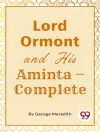William Morris’s ‘The House of the Wolfings’ is a captivating exploration of myth and medievalism, set in a fantastical reimagining of ancient Germanic tribes. Written in an archaic yet lyrical style, the narrative echoes the rhythms of epic poetry, imbued with Morris’s deep appreciation for the interconnectedness of nature and humanity. This richly detailed work employs a vivid symbolic landscape, drawing upon historical sources and Morris’s interests in Norse legends, which serves to bridge the mythical past with a critique of contemporary Victorian society in the late 19th century. William Morris, a key figure in the Arts and Crafts Movement, was not only a writer but also a designer, social activist, and socialist thinker. His immersion in medieval culture and a profound commitment to artistry informed his storytelling, leading him to create a world that embodies the harmony of craftsmanship and nature. Morris’s passion for reviving ancient traditions and his critique of industrialization are evident throughout the novel, reflecting his broader political beliefs and artistic ideals. A masterwork of speculative fiction, ‘The House of the Wolfings’ is highly recommended for readers seeking deeper insights into the interplay of myth, history, and society. Morris’s deft storytelling invites readers to inhabit a world where valor, community, and beauty reign, making it a must-read for lovers of fantasy and historical literature alike.
Mengenai Pengarang
William Morris (1834–1896) was a multifaceted figure in the British artistic world, known for his work as a poet, novelist, translator, and influential designer. He is often associated with the British Arts and Crafts Movement, which he championed through his manifold endeavors to intertwine beauty and utility in everyday objects. A man of fervent socialist beliefs, Morris poured his political ideals into his creative works, aiming to reach the common man with messages of beauty and social reform. His foray into literary work included contributions to the fantasy genre. ‘The House of the Wolfings’, published in 1889, is one such noteworthy addition, where Morris weaves a rich tapestry of Norse saga-inspired mythos, storytelling, and an imaginative world reflecting his own aesthetic ideals and socialist principles. The novel was a precursor to high fantasy literature, influencing later giants like J.R.R. Tolkien. Morris’s narrative style in ‘The House of the Wolfings’, and indeed in his other prose romances, is marked by archaic language and a deep appreciation for medieval culture, which he believed held values of community and craftsmanship that modern society should aspire to reclaim. Morris’s legacy extends beyond literature into the visual arts and design, making him a Renaissance man in his own right and a significant cultural figure of the Victorian era.












